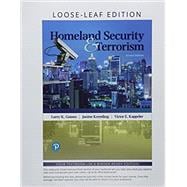NOTE: This edition features the same content as the traditional text in a convenient, three-hole-punched, loose-leaf version. Student Value Editions also offer a great value; this format costs significantly less than a new textbook. Before purchasing, check with your instructor or review your course syllabus to ensure that you select the correct ISBN.
For introductory courses in homeland security.
A complete picture of homeland security and terrorism – past and present
Homeland Security provides a comprehensive overview of homeland security and terrorism. Acknowledging that homeland security is primarily a response to terrorism, the text examines the threats and operations of terrorist organizations before moving on to U.S. counterterrorism efforts. Homeland security measures are assessed alongside laws and presidential directives from the early 2000s to the present day. The 2nd edition includes new analysis of hotly contested issues such as immigration and border security, cybercrime and cybersecurity, the disaster response system (FEMA), and U.S. government guidance on protecting critical infrastructure and key assets from acts of terrorism.










